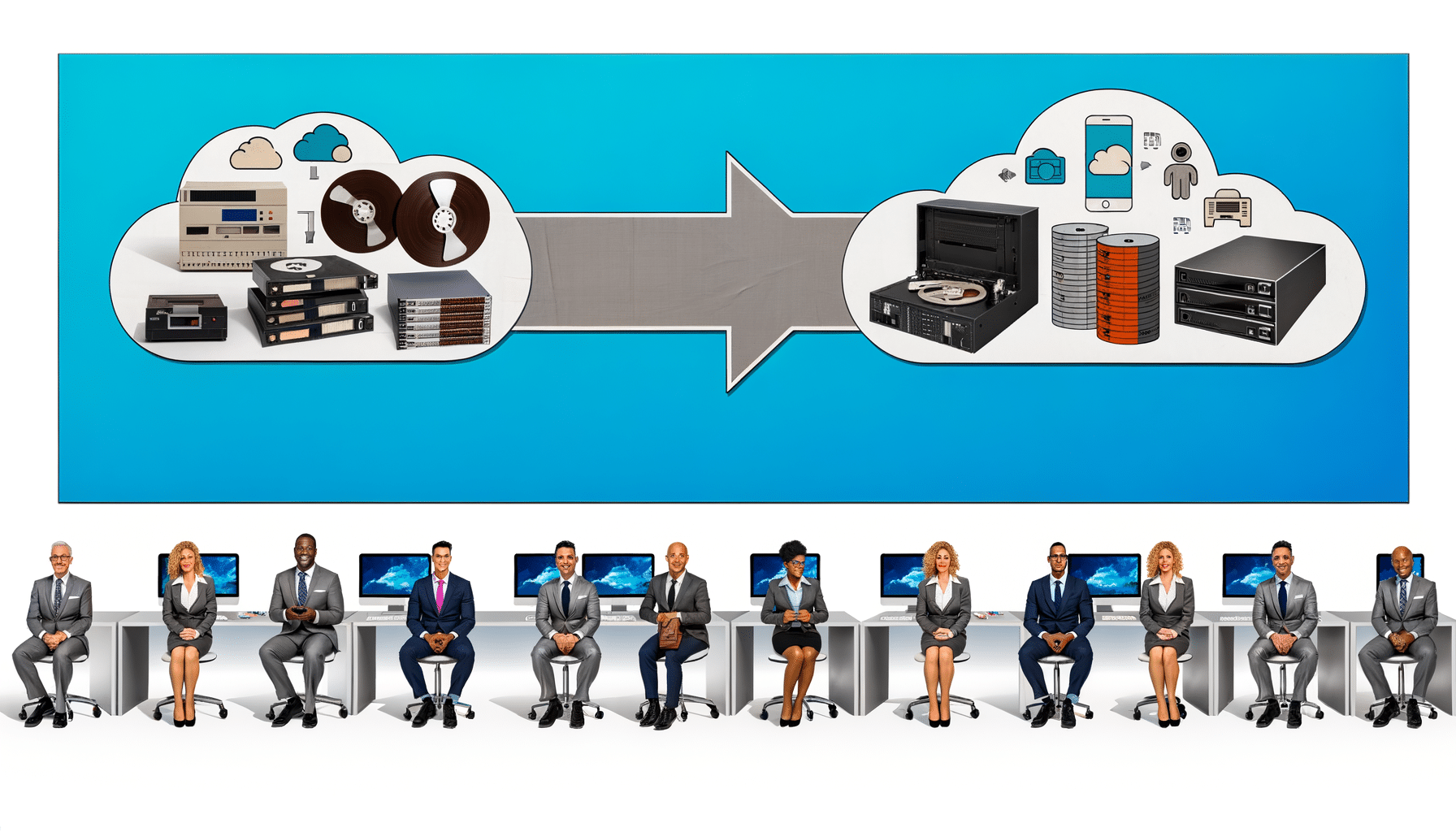Introduction
In the rapidly changing world of technology, data backup has become indispensable for businesses and individuals alike. As the world generates more data, the methods to preserve and secure it have evolved significantly. From the initial use of physical storage devices to today’s advanced cloud storage solutions, the history of data backup is also the history of innovation and resilience. As the founder of RecordsKeeper.AI, my journey with data management has always been about harnessing technology to simplify and enhance the user experience. In this article, I will walk you through the remarkable evolution of data backup and offer insights into where it’s heading next.
The Era of Physical Storage: Disks and Tapes
Many of us might recall the distinctive hums and whirs of tape drives and floppy disks. These were the torchbearers of early data backup solutions. While they were groundbreaking in their time, offering businesses a way to store and retrieve data reliably, they required significant physical space. Moreover, regular maintenance was essential to prevent data degradation.
Despite their limitations, physical storage media were invaluable. They taught us the importance of having a tangible backup medium that could be easily transported. This was evident in disaster recovery operations where securing and relocating data was a matter of urgency. However, the physical constraints and the risks of data degradation pushed innovators to seek alternatives.
Digital Revolution: The Advent of CDs and DVDs
The arrival of CDs and DVDs heralded a new age in data backup. Their compact nature and increased storage capacity made them a hit in households and businesses. They were durable, more accessible, and considerably reduced the space needed for data storage. These optical disks paved the way for users to transition from cumbersome storage equipment to sleeker, more efficient solutions.
However, as user demands continued to rise, even these technologies soon met their match against emerging options that offered better storage capacity and reliability. As we transitioned from these mediums, the seeds for more revolutionary ideas were already being sown – cloud storage was on the horizon, and it was prepared to change everything.
Entering the Digital Age: The Rise of Hard Drives and SSDs
Hard drives became the backbone of data storage due to their capacity and ease of access. Speed and reliability were significant improvements, especially when Solid State Drives (SSDs) entered the market. Unlike traditional hard drives, SSDs offered rapid data retrieval and fewer chances of mechanical failure, making them ideally suited for businesses managing large data volumes.
This evolution marked a cultural shift in how businesses approached data storage and backup. It was not just about where, but how efficiently data could be backed up and restored. At RecordsKeeper.AI, we have always prioritized speed and reliability, and SSDs have been a vital part of our data management infrastructure.
The Shift to Cloud Storage: A New Era Begins
In the contemporary tech landscape, cloud storage has revolutionized the way we think about data backup. With the cloud, geographical barriers and hardware limitations have become a thing of the past. Businesses now enjoy the luxury of scalability, seamless integration, and cost efficiency. This game-changing technology now allows us all to access our data anytime and anywhere, with layers of security ensuring its safety.
Incorporating blockchain technology in solutions like RecordsKeeper.AI further enhances data security. Blockchain ensures data integrity, providing a tamper-proof system essential for compliance management across sectors like healthcare, finance, and government. This integration of blockchain and AI ensures that businesses are always a step ahead in data management best practices.
Implications for Businesses and Individuals
The transformation from physical to cloud storage has not only changed how data is backed up, but it has also affected business operations globally. With automated categorization, compliance support, and immutability through blockchain, businesses can now leverage data backups as strategic assets to foster growth. The convenience brought by these developments provides companies with the agility needed in a competitive marketplace.
Individuals, too, have benefited tremendously. Personal data preservation has become almost effortless, given the user-friendly interfaces of cloud storage platforms. Yet, with ease comes the responsibility of being informed about best practices and being vigilant about potential security risks.
A Glimpse into the Future of Data Backup
As technology continues to advance, the field of data backup promises more innovations. Concepts like quantum storage and AI-driven predictive backups are beginning to enter the conversation. RecordsKeeper.AI remains at the forefront of these advancements, ensuring that users have access to the most sophisticated and secure data management solutions available.
Conclusion
The journey from physical data storage to cloud technology represents an incredible shift in our ability to preserve and protect data. We’ve come a long way, yet the pace of innovation ensures that there’s always more to learn and explore. For businesses and records management professionals, staying updated is vital, and leveraging platforms like RecordsKeeper.AI can provide you with the competitive edge needed to thrive in today’s digital landscape.
As I reflect on my journey with RecordsKeeper.AI, I invite you to explore these innovations with us, follow our insights, and join me in advancing data backup and management practices for a better, more secure future.








